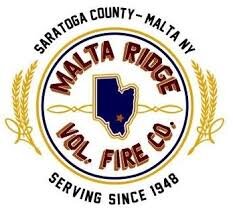PUBLIC SERVICE ANNOUNCEMENTS
FIRE PREVENTION WEEK 2024 OCTOBER 6 - 12
CHECK BACK FREQUENTLY TO SEE UPDATES, VIDEOS, AND PICTOGRAPHS
Candles make beautiful holiday decorations, but they’re still an open flame and can easily ignite nearby items. For a safer alternative, try flame-less, battery-operated candles. They provide the same warm glow and festive scent without the risk!
Heating is the second leading cause of home fires?
Is your home prepared for safe heating?
Myth #6 – Sprinklers are ugly and will diminish the aesthetics of my home. Fact - New home fire sprinklers can be mounted flush with walls or ceilings and hidden with decorative covers.
Myth #5 – I have smoke alarms, so I don’t need fire sprinklers. Fact - Smoke alarms are essential in every home. But they can only detect a fire. Fire sprinklers detect the fire and automatically control it, saving lives and property.
Myth #4 – The fire department will be able to put out the fire and save my things. Fact - In the 9-12 minutes a fire department needs to respond, an uncontrolled fire will grow and spread through the home, causing tremendous smoke and fire damage.
Myth #3 – Water damage from sprinklers is worse than fire damage. Fact - A sprinkler flows 10-26 gallons of water per minute. A fire hose flows 250 gallons of water per minute. The property loss in a sprinklered home fire is a small fraction of the typical loss in an un-sprinklered home fire.
Myth #2 – Sprinklers will leak. Fact – Sprinkler mishaps are generally less likely and less severe than home plumbing system problems.
Myth #1 – If one sprinkler goes off, they all go off. Fact - When a fire starts, the sprinkler closest to it activates. That quick and automatic action prevents injuries and saves lives.
This fall weather is the perfect time to use your fireplace or wood stove to take the chill out of the air. Before using it this season, help to keep your home fire and carbon monoxide safe by having your chimney cleaned and inspected by a qualified professional.
Be sure to have working smoke and carbon monoxide alarms!
Always remember the ice may not be as thick as it appears! Always make sure you are measuring to verify the ice is thick enough before adventuring onto it.
WORKPLACE FIRE SAFETY
Check out some tips to keep your co-workers and workplace safe from fires. Click on the image to read more.
Making a Home Fire Escape Plan:
Draw a map of each level (Make sure to include a basement or attic if you have one in your home)
Show all doors and windows.
Create a plan of how to escape.
Show a meeting spot outside so the whole family knows where to go once outside.
Practice plan with everyone in your home.



















